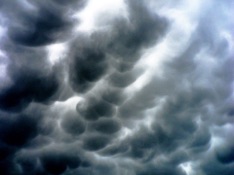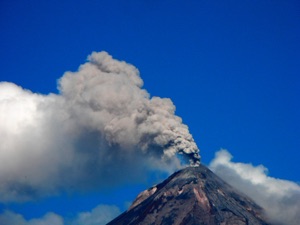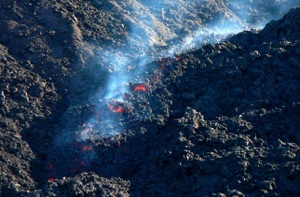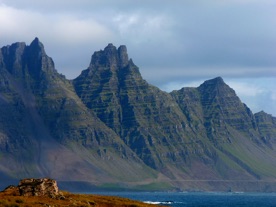William I Rose
Photo by Jon Fink

Research Professor, Volcanologist
Geological Engineering & Sciences
Michigan Technological University
1400 Townsend Dr
HOUGHTON, MI 49931 USA
906 487 2367 or 906 487 2531
Professional Items
AB PhD Dartmouth College 1966, 1970
At Michigan Tech since 1970
Sabbatical Leaves at NCAR, USGS, LANL and Univ of Bristol
Research Identity Keywords
Volcanology, remote sensing, gas emissions, atmospheric effects of volcanoes, fine volcanic ash, Central America, especially Guatemala, Volcanic Hazards, Social Geology, Earth Science Teaching, Geoheritage
Research Materials to share
Recent Publications, with pdf copies of most to share
Open Vents in Guatemala--Volcano experiments!
Topical collections of research publications
Airborne Volcanic cloud studies
Infrared Remote Sensing of Volcanic Clouds
Quantitative Volcanology from BC
Educational Efforts
Keweenaw Geoheritage--Copper Country Geology and its impact
INVOGE Dual MS degree in Volcanology at Clermont Ferrand or Milan
Peace Corps Masters International MS in Natural Hazards
Remote Sensing for Hazards Mitigation in Pacific Latin America--NSF PIRE
MiTEP Michigan Teacher Excellence Program-- NSF
Volcanology Graduate Study at Michigan Tech
Geo Travel Initiative for Michigan Tech
Courses (I no longer conduct classes!)
Ashfall--a multiuniversity Graduate Course 2009
Volcanology--The Big Ideas: a graduate course 2011
Earth Science for Teachers: MiTEP ESI-1
Earth Science for Teachers: MiTEP ESI-2
Recent Press
Earth Mag Aug 09--Cover+Feature--Social Geology
Earth Mag Oct 09--Cover+Feature--Volcanic Clouds
Blue Review 2016: Volcanism in Guatemala
Geoheritage: More than a Boulder
Geoheritage: Stamping through History
Unscripted: All Ashore that’s Going Ashore
Unscripted: Black and white and red all over
New Insights into the Midcontinent Rift by S Stein and others
Jacobsville Sandstone: A candidate for nomination for
“Global Heritage Stone Resource” Episodes



Fuego
mammatus

Pacaya

PROFESSIONAL EXPERIENCE
6-9/70 Visiting Instructor in Geology, Dartmouth College, Hanover, NH.
9/70-9/74 Assistant Professor of Petrology, Michigan Technological University, Houghton.
9/74-9/79 Associate Professor of Petrology, Michigan Technological University, Houghton.
8/77-8/78 Senior Visiting Scientist, Upper Atmosphere Group, National Center for Atmospheric Research, Boulder, CO.
8/77-8/78 Visiting Scientist, Branch of Isotope Geology, USGS, Denver, CO.
9/79-5/90 Professor of Petrology, Michigan Technological University, Houghton.
7-8/80 Visiting Scientist, Cascade Volcano Observatory, USGS, Vancouver, WA.
1/81 and continuing, Geochemist (W.A.E. basis), USGS, Cascade Volcano Observatory , Vancouver, WA; Alaska Volcano Observatory, Anchorage; VDAP
11-12/83 Visiting Scientist, U. S. Antarctic Research Program, McMurdo and South Pole.
8/82; 1/84 - Visiting Scientist, Volcanological Survey of Indonesia.
2-3/84; 1/85; 5-6/85 - Visiting Scientist, USGS, Hawaiian Volcano Observatory.
8/85-6/86 Visiting Scientist, Los Alamos National Laboratory
6/88-3/91 NSF Panelist, Division of Earth Sciences.
6/90- 6/98 Department Chair, Department of Geological Engineering and Sciences, Michigan Technological University , Houghton.
1/99-12/99 Visiting Leverhulme Fellow, Department of Earth Sciences, University Of Bristol, UK
1/00-12/11 Professor of Petrology, Michigan Technological University, Houghton.
1/00-6/01 Interim Director, Michigan Tech Remote Sensing Institute
12/11- Research Professor, Michigan Technological University, Houghton.
Synergistic Activities
1. Since 1970: Efforts to help build infrastructure within volcanic hazards efforts in developing countries, funded by NSF International Programs and OFDA/USGS/VDAP grants: Guatemala--Decade Volcano Workshop 1993; Collaborative hazards work 1999-2004. Ecuador: Cospec training, 1989; Lahars work, 2002. El Salvador: Synergistic efforts at post war science contacts; 1996-2004; Special GSA Publication 2004. Mexico: PhD student training, 1995-98; Collaborative visits from Hugo Delgado, 2002-4. Chile: initial research collaborative visit, 1989. Argentina: Initial visit 2002; field studies 2003. Several field projects in Guatemala and El Salvador funded by USGS/OFDA. Support for two Central American students via USGS/VDAP (CAMI). Pacific Latin America: 2005-2011 US Peace Corps and NSF PIRE-OISE funding for Remote Sensing applied to Hazard Mitigation. 2011: NSF funded PASI workshop for 65 professionals from 16 countries, San Jose, Costa Rica.
2. Since 1980: Educational efforts shared with many other campuses: Video based educational efforts in Optical Mineralogy, 1982; Volcanic Rock Textures, 1985; and video field trips: 1987-1993; Volcanic Rocks and their vent areas, Industry Short Courses (field trips and lectures); 1976-1985; Graduate Student field trip efforts, 1997 (Western Mexico and IAVCEI meeting); NSF funded International Travel Grant to IAVCEI Bali meeting, and associated Hawaii and Pinatubo field trips, July 2000; NSF Int Travel Grant for students to attend IAVCEI meeting in Chile, 2004. NSF Int Travel Grant for students to attend IAVCEI meeting in Chile, 2004. Iceland IAVCEI meeting 2008; Special session exploring graduate volcanology educational efforts, AGU 2002. 2005-2009: FIPSE-NAFTA 6 University Consortium in Earth Hazards (EHaz), funded by Dept of Education. Multi-university graduate classes 2005-2010. INVOGE: Dual MS degree program in Volcanology/Geotechniques Michigan Tech, Buffalo, UBP Clermont Ferrand and Milan Bicocca, 2009-2014.
3. Since 1986: Development of volcanic cloud detection algorithms for meteorological satellite detectors, and communication about the use of these for hazard mitigation--continual outreach to advanced users from regional Volcanic Ash Aviation Centers; extensive web- based communications effort; International Volcanic Cloud Remote Sensing Workshops, 2001, 2003, Managua 2004; South American Workshops, March 2002, Nov 2004. Mexico City Jan 2005; San Jose Costa Rica June 2007, Santiago, Chile, 2010; Bandung and North Sulawesi, Indonesia, March 2009; Earth Observatory of Singapore, Feb 2010.
4. Since 1992: Development of Michigan Tech Remote Sensing Institute. Co-organizer and Interim Director of an institute with 35 faculty members from nine different MTU departments, Development of shared lab facilities, success with equipment funding as a NASA center of excellence, development of an interdisciplinary minor program in remote sensing; many interdisciplinary seminar series and several new interdisciplinary classes. Became the origin of the Atmospheric Science PhD program.
5. Since 2004: Started New Peace Corps Masters International Program, Mitigation of Geological Natural Hazards, program has strong connections with Central American countries and is now beginning in Indonesia (volcano countries).


